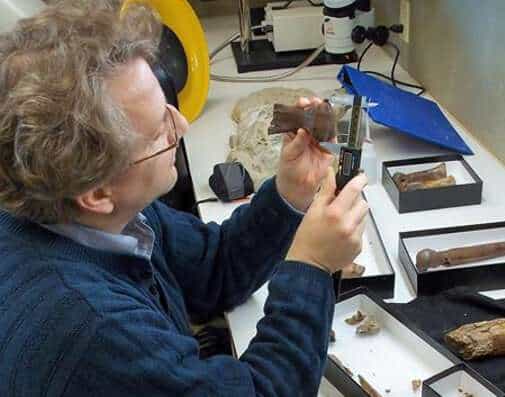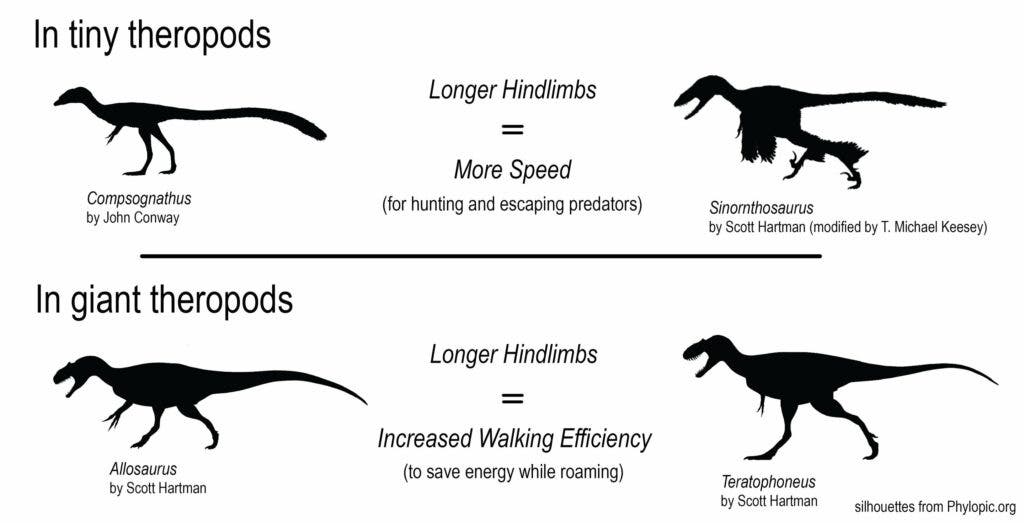
The consensus among evolutionary biologists is that long legs are indicative of adaptations for higher maximum speed. However, a new study that analyzed the limb mechanics of over 70 species of theropods, including the famous Tyrannosaurus rex, revealed a much more nuanced story.
“When you’re a bigger animal, those adaptations may also be for endurance and efficiency. It may be about being a marathoner rather than a sprinter,” Thomas Holtz, principal lecturer in the University of Maryland’s Department of Geology and co-author of the new study, said in a statement.
Holtz and colleagues measured limb proportions, size ratio, body mass, and gaits for a variety of dinosaurs ranging in size from half a pound to over nine tons.
Paleontologists have often credited T. rex‘s reputation as the top dog of the Cretaceous to its bipedalism and running speed.

Most recently, however, studies investigating the locomotion of the fierce predator haven’t reached very impressive conclusions. In 2017, paleontologist Bill Sellers and his team published a study in which they employed the most comprehensive computer models of their time to simulate how a fleshed-out rex walked and ran.
This model suggests that T. rex could only move at a walking gait of about 12 miles per hour (20 kilometers/hour). Any faster and its foot bones would shatter from the momentum.
Myriam Hirt, a biologist at the German Centre for Integrative Biodiversity Research, employed a different model. Hirt and colleagues analyzed a public database containing information about the top speeds and body sizes of over 500 living species. They used this information to infer T. rex‘s top speed of about 18 miles per hour (29 kilometers/hour) based on its weight.

In both cases, if you ever encountered a T. rex in the luxurious jungle 66 million years ago, you would have actually had a fair chance to make it out alive. There are humans who could have simply outrun the menacing-looking dinosaur.
Although biologists have always known that larger body sizes can limit speed, Holtz and colleagues took things a step further. Their results suggest that longer legs can indeed contribute to higher top speed, but only in small and medium-sized dinosaurs. This wasn’t true for long-legged dinosaurs weighing over 2,200 pounds (one ton), the researchers reported in the journal PLoS ONE.
Among the largest dinosaurs, those with the longest legs needed less energy to move.
“That’s actually a very beneficial savings, because predators tend to spend a great deal of their time foraging, searching for prey,” Holtz said. “If you are burning less fuel during the foraging part of the day, that’s an energy savings that dinosaurs with shorter leg forms didn’t get.”






